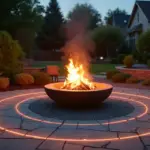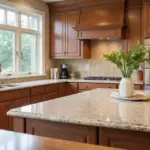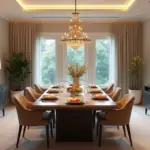Howdy, y’all! Gabriel here, and today we’re gonna wrangle some light bulbs. Now, I know what you’re thinkin’ – “Gabriel, ain’t a light bulb just a light bulb?” Well, let me tell you, choosing the right bulb for your kitchen table is like pickin’ the perfect horse for a cattle drive. Get it right, and you’ll be ridin’ high with a warm, inviting glow that’ll make your mama’s pot roast look like it came straight from a fancy restaurant. Choose poorly, and you might as well be eatin’ in a barn.
Let’s saddle up and explore the world of kitchen table lighting, from the basics to some fancy new gadgets that’ll make your old fixtures feel like they’ve been kicked by a mule. We’ll cover everything from traditional bulbs to those newfangled LED bulbs that are lighting up the West like a summer wildfire. So grab a cup of coffee, pull up a chair, and let’s shed some light on this subject!

Key Takeaways
- We’ll wrangle the basics of light bulbs, including wattage and lumens, so you can rope in the perfect brightness for your kitchen table.
- We’ll corral different types of light bulbs, from LEDs to old-school incandescent, helping you find the best steed for your lighting rodeo.
- We’ll rustle up some tips on color temperature and energy efficiency, ’cause the right light can make your kitchen feel cozier than a calf in a new barn.
- We’ll lasso some special features like dimmability and smart tech that’ll make your kitchen table shine brighter than a new copper pot.
- We’ll brand you with some practical tips, like where to place your lights and how to use multiple fixtures, so your kitchen table’s as well-lit as a full moon on the prairie.
- And remember folks – good lighting can turn your kitchen from a lonely bunkhouse into the heart of your homestead, perfect for family gatherings and good old-fashioned shin-digs.
Understanding Light Bulb Basics
Alright, partners, before we start this cattle drive into the world of kitchen lighting, let’s make sure we’ve got our basics covered. Understanding these fundamentals is like knowing how to saddle a horse before you ride – it’s essential.

Wattage and Lumens
Now, wattage and lumens might sound as confusing as a rattlesnake in a boot, but they’re simpler than you think. Wattage is like the size of your horse – it tells you how much energy the bulb’s gonna use. Lumens, on the other hand, are like the speed of your horse – they measure how bright that little light is gonna shine.
For your kitchen table, you want a bulb with enough lumens to light up your vittles like high noon, but not so bright it’ll blind you like staring at the sun. Always check what wattage your fixture can handle, though. Using a bulb that’s too powerful is like putting a wild mustang in a pony’s corral – it’s just asking for trouble.
Color Temperature
Color temperature is trickier than a coyote in a henhouse, but it’s crucial for setting the right mood. It’s measured in Kelvins, and despite what you might think, lower numbers mean warmer light. Around 2700K to 3000K will give you a warm, cozy glow that’ll make your kitchen feel like a welcoming campfire on a chilly night. Higher numbers, like 4000K to 5000K, are cooler and can make your space feel as fresh as a mountain stream.
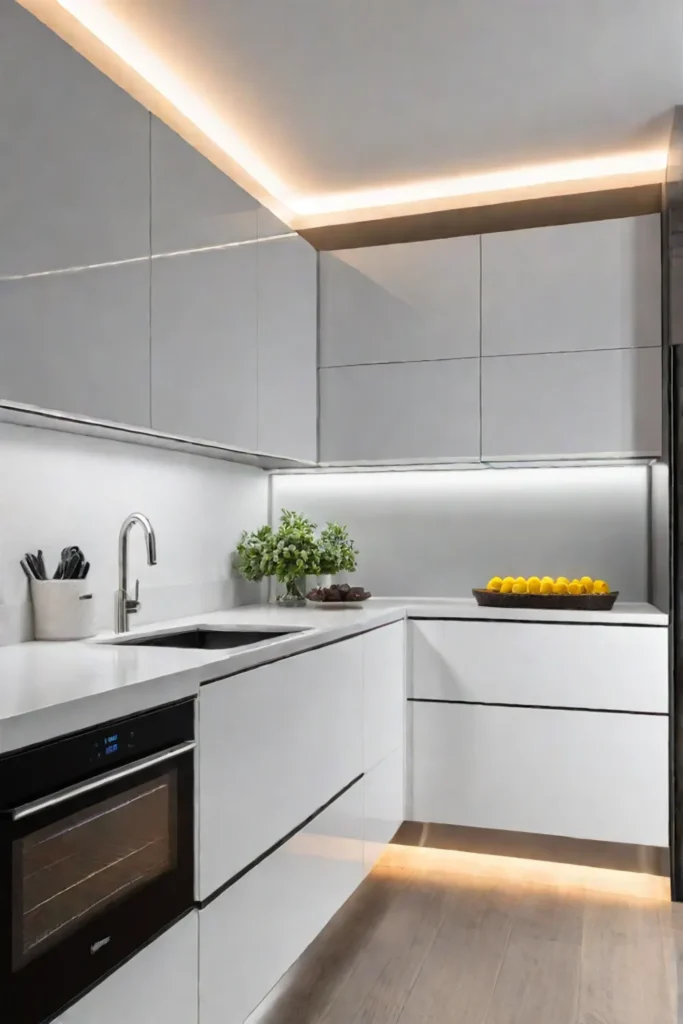
The right color temperature can make your home-cooked meals look tastier than a juicy steak at a BBQ cookoff. So choose wisely, partners!
Energy Efficiency
In these parts, we respect the land and don’t take more than we need. That’s why energy efficiency is as important as a good pair of boots on a long trail. Different types of bulbs use different amounts of energy, and some are as efficient as a well-trained sheepdog.
Look for bulbs with an Energy Star rating – they’re the cream of the crop when it comes to efficiency. They might cost a bit more upfront, but they’ll save you more money down the trail than a prospector striking gold. Calculate the long-term savings by thinking about how often you use your lights. It’s like planning for a long cattle drive – a little preparation can save you a heap of trouble later on.
Types of Light Bulbs
Now that we’ve covered the basics, let’s wrangle some different types of light bulbs. Each one’s got its personality, like the different horses in a stable. Let’s see which one might be the perfect steed for your kitchen table lighting.
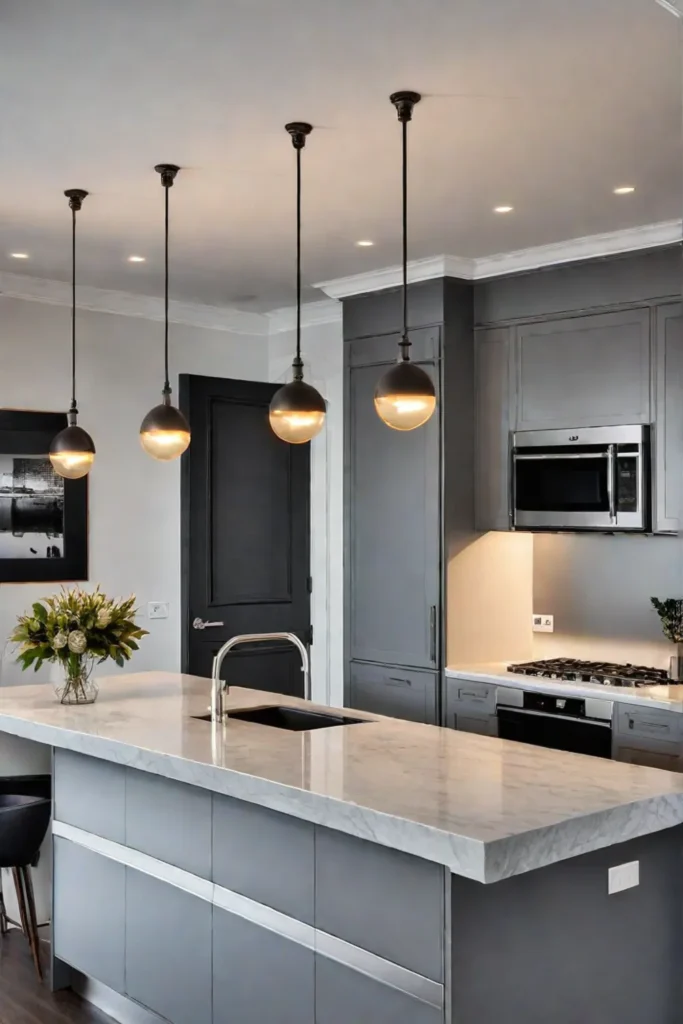
Incandescent Bulbs
Incandescent bulbs are like that old trail horse you’ve had forever – reliable, familiar, and give off a warm, natural light that’ll make your kitchen table feel cozier than a winter’s night by the fireplace. They create an atmosphere that’s perfect for sharing stories over a home-cooked meal.
But here’s the rub – these old-timers aren’t as efficient as the new kids on the block. They burn through energy faster than a tumbleweed catches fire, and their lifespan is shorter than a cowboy’s temper. Many places are starting to phase them out, like retiring an old horse to greener pastures.
CFL Bulbs
CFL bulbs, or Compact Fluorescent Lamps if you want to get fancy, are like that clever mule that can carry more than you’d expect. They’re more energy-efficient than their incandescent cousins, using less power to light up your kitchen table than a firefly in a jar.
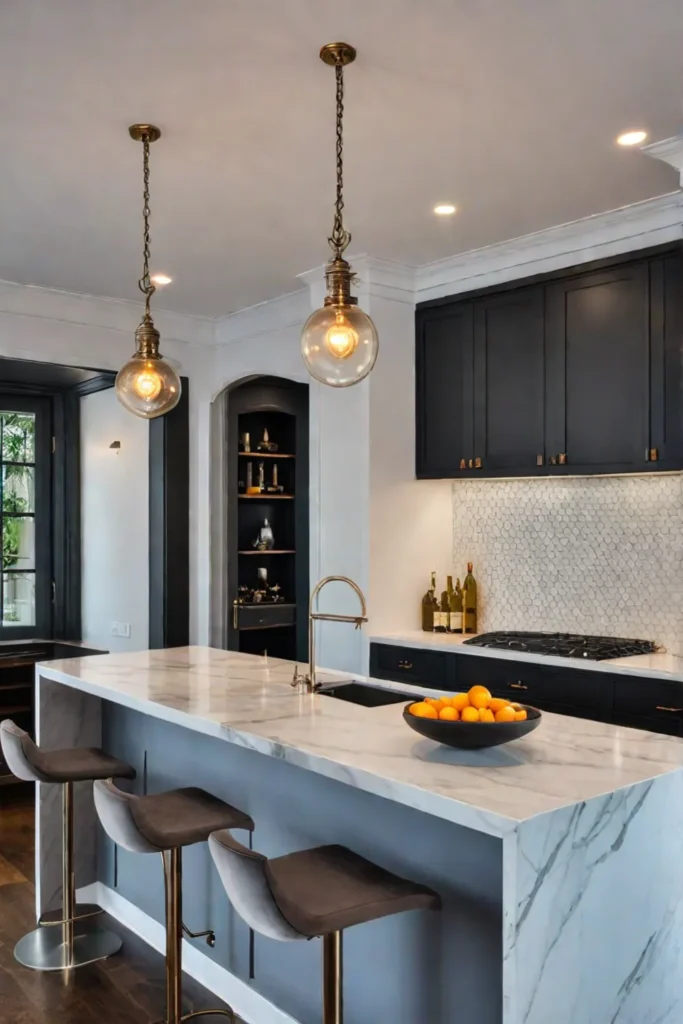
These bulbs come in more flavors than your grandma’s jam collection, with different color temperatures to suit any kitchen style. But here’s a word of caution, partners – these bulbs contain a smidge of mercury, about as much as you’d find in a can of tuna. So when they finally ride off into the sunset, make sure you dispose of them properly. Treating our land right is as important as treating your neighbor right.
LED Bulbs
Now, if CFLs are clever mules, LED bulbs are like that young, strong stallion that can outrun and outlast any other horse in the stable. These are the most energy-efficient options you’ll find on this side of the Mississippi. They’ll keep shining bright long after other bulbs have fizzled out, like a campfire that never seems to die.
LEDs come in more varieties than wildflowers in spring, with all sorts of brightness levels and color temperatures. You can find one to suit any mood, from a romantic dinner for two to a lively family breakfast. They might cost a bit more upfront, like investing in a good saddle, but they’ll save you more money in the long run than finding a gold nugget in your beans.
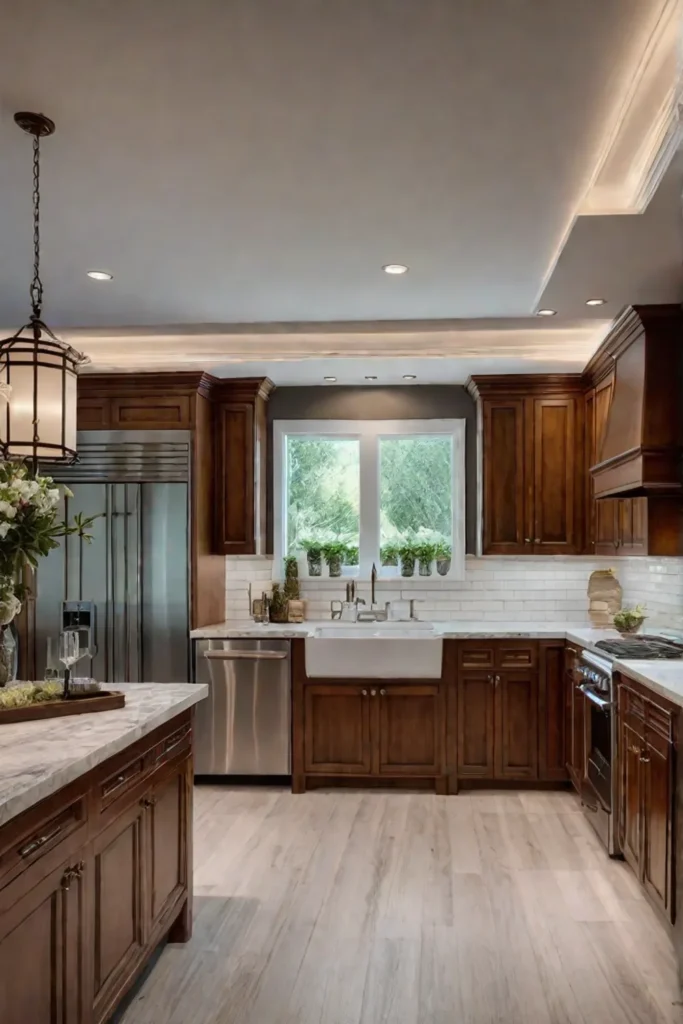
Halogen Bulbs
Last but not least, we’ve got halogen bulbs. These are like the workhorses of the lighting world – they produce a bright, white light that’s as close to natural daylight as you can get without opening a window. This makes them great for tasks that need a keen eye, like reading Grandma’s old recipe cards or making sure that chicken is cooked all the way through.
Halogen bulbs are a step up from incandescent in terms of energy efficiency, but they’re still not as thrifty as LEDs. They also tend to run hotter than a branding iron, so keep that in mind when you’re choosing where to put them. You don’t want to accidentally cook your curtains along with your dinner!
Choosing the Right Light Bulb
Alright, partners, now that we’ve rounded up all these different types of bulbs, let’s talk about how to choose the right one for your kitchen table. It’s like picking the perfect horse for a ride – you need to consider the terrain, the distance, and what you’re aiming to accomplish.
Desired Mood
The mood you’re after is as important as the trail you choose. Warm light, like what you get from incandescent or warm LEDs, creates an atmosphere cozier than a bear’s den in winter. It’s perfect for those family dinners where stories flow as freely as the gravy.

On the flip side, cooler light can give your kitchen a modern feel, fresh as the morning dew on prairie grass. This can work well if your kitchen’s got a more contemporary style, as sleek as a new tractor. Remember, the right lighting can complement your kitchen decor like a good hat complements a cowboy.
Energy Savings
Now, let’s talk turkey about energy savings. Switching to LED or CFL bulbs can cut your energy bills faster than a hot knife through butter. These bulbs sip electricity like a proper lady at a tea party, unlike those old incandescents that guzzle it like a cowhand at a saloon.
If you’re looking to save even more, consider installing dimmer switches. They’re like reins for your lights, letting you adjust the brightness to suit your needs. And if you’re feeling fancy, smart bulbs can manage your energy use automatically, like a well-trained sheepdog herding your electricity costs.
Color Preferences
Choosing the right color for your bulbs is as crucial as picking the right paint for your barn. Warm colors can enhance wood tones and create a welcoming vibe that’ll make folks want to pull up a chair and stay awhile. It’s like the difference between a cold campsite and one with a roaring fire.
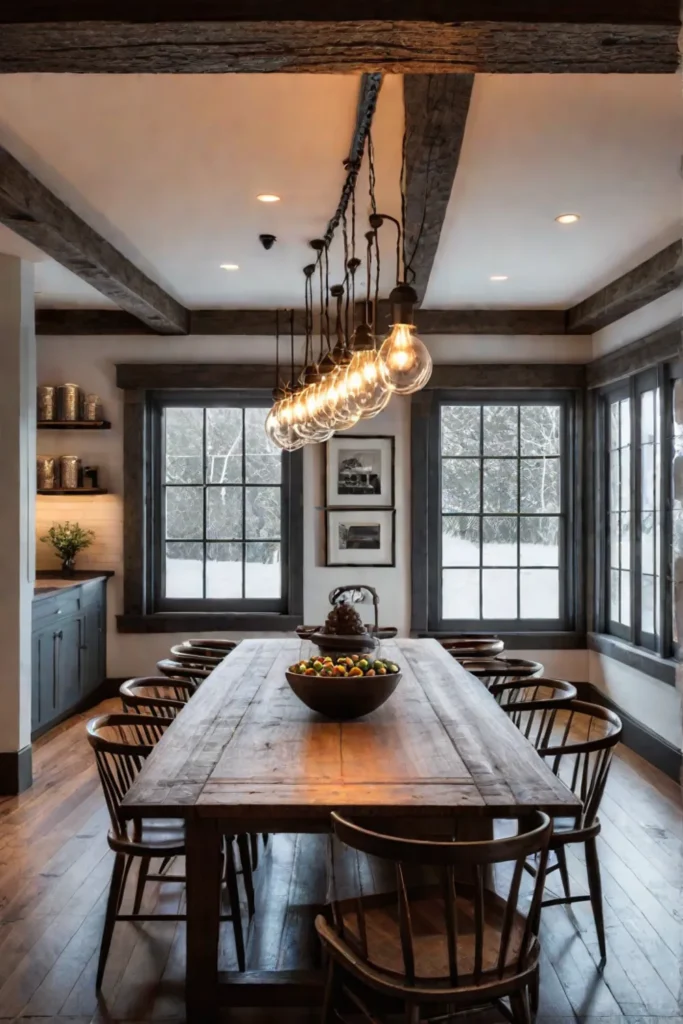
If your kitchen’s got a more modern look, neutral or cool colors might be just the ticket. They can make your space feel as crisp and clean as fresh linen on a clothesline. The right bulb color can improve both the function and the feel of your kitchen, making it a place where memories are made and shared.
Special Features to Consider
Now, partners, let’s move on to some of the special features you might want to consider. These are like the extra tricks a well-trained horse might know – not necessary, but mighty nice to have.
Dimmable Options
Dimmable bulbs are like having a good pair of reins – they give you control. You can adjust the light to suit whatever you’re doing, whether it’s a romantic dinner for two or a full-on family feast. Just make sure your bulbs are compatible with your dimmer switch, or you’ll end up with a bucking bronco instead of a smooth ride.
Being able to dim your lights is as useful as a pocket on a shirt. It lets you create the right atmosphere for any occasion, and can even help you save on your energy bills. It’s like being able to control the sunset – pretty darn magical if you ask me.
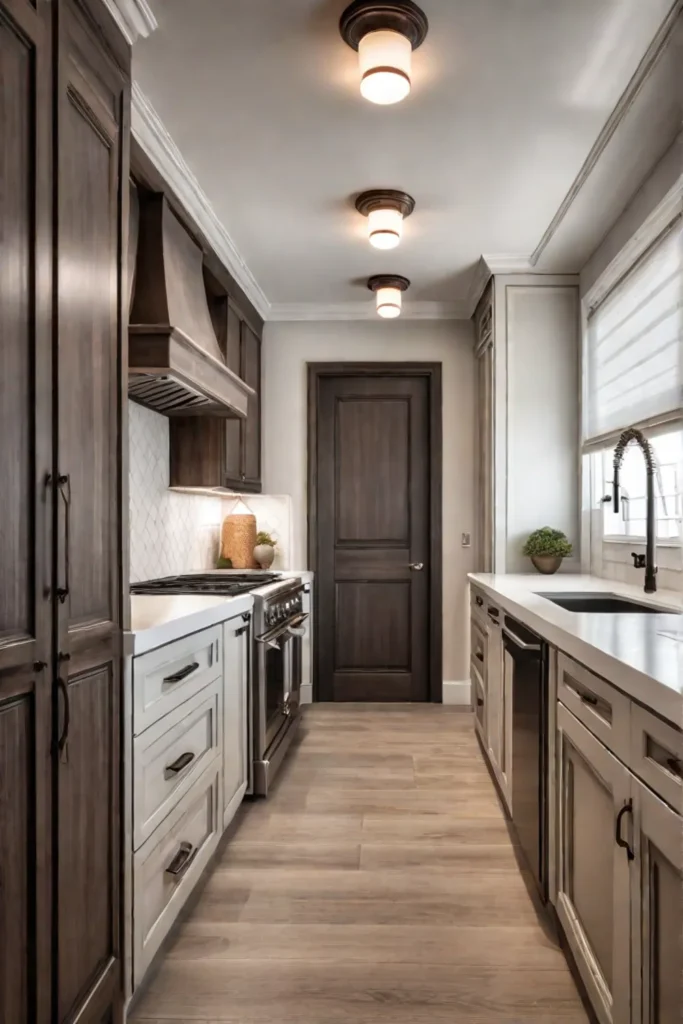
Color-Changing Bulbs
Now, color-changing bulbs might sound as strange as a cow in a tuxedo, but they can add a heap of fun to your kitchen. These bulbs let you change the color of your lighting faster than a chameleon on a disco floor. Most of them can be controlled with a remote or even your smartphone, giving you more options than a general store.
These can be great for special occasions, letting you set the mood for everything from a cozy family dinner to a rollicking hoedown. Just imagine being able to turn your kitchen red for Valentine’s Day, or green for St. Patrick’s Day, without having to repaint!
Smart Lighting
Smart lighting is like having a ranch hand for your lights. These systems can integrate with your home automation, letting you control your lights from your phone or even with your voice. It’s like being able to lasso your lights from across the room!
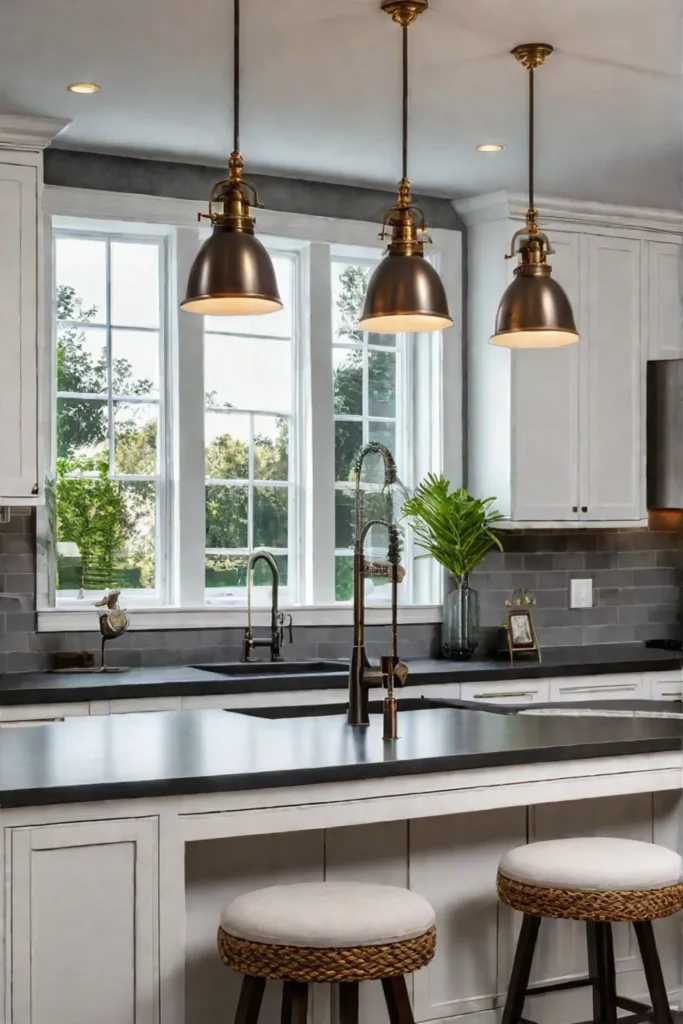
You can schedule your lights to change with your daily routine, have them turn on automatically when you get home, or even sync them with your music for a real shindig. It’s as convenient as having a horse that knows the way home on its own.
Practical Tips for Kitchen Table Lighting
Alright, folks, we’re in the home stretch now. Let’s round up some practical tips to help you wrangle your kitchen table lighting like a pro.
Reading Labels
Reading light bulb labels is like reading a map before a long journey – it’ll save you a heap of trouble down the trail. Check the lumens for brightness – the higher the number, the brighter the light. For color temperature, look at the Kelvin rating. Remember, lower numbers (around 2700K-3000K) give you that warm, cozy feeling.
Keep an eye out for energy efficiency ratings like ENERGY STAR. These bulbs are as efficient as a well-oiled machine, saving you money in the long run. And don’t forget to check the lifespan – a longer-lasting bulb means less time changing them out, giving you more time to enjoy your perfectly lit kitchen table.
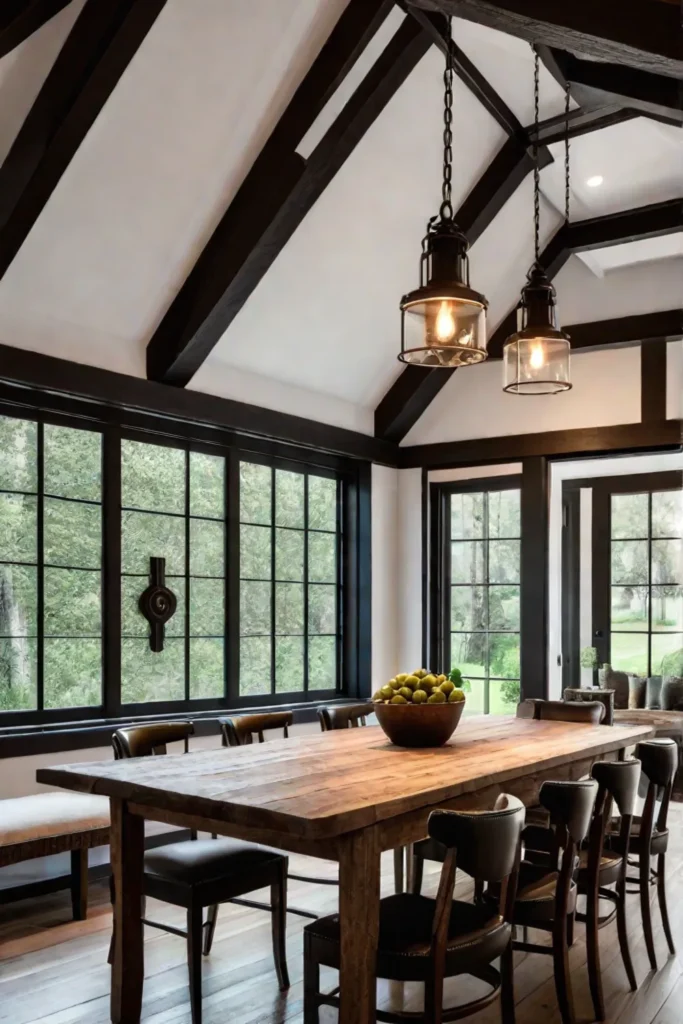
Lifespan Tips
To get the most life out of your bulbs, treat ’em right. Choose bulbs with longer lifespans – LEDs are like the tortoises of the lighting world, slow and steady, lasting for years. Avoid turning your lights on and off more than necessary – it’s like spurring a horse too much, it’ll wear ’em out faster.
Keep your fixtures clean, too. Dust and grime can dim your lights faster than a sandstorm in the desert. Regular cleaning is like grooming your horse – it keeps everything running smoothly and looking good.
Installation Advice
When it comes to installing your new bulbs, safety first, partners. Always turn off the power before you start – messing with live wires is as dangerous as trying to shoe a wild Mustang. Use the right tools for the job, whether that’s a screwdriver or a sturdy ladder.
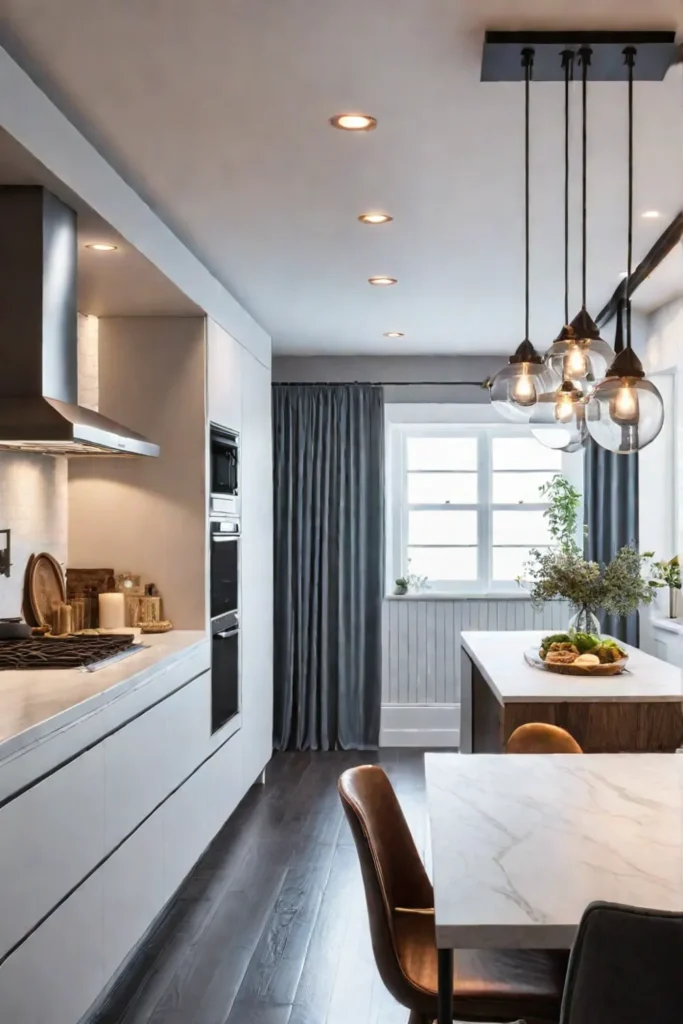
Don’t be afraid to wear gloves – broken glass is as nasty as a rattlesnake bite. And always follow the manufacturer’s instructions. Each bulb might have its quirks, like a horse with its personality. Respect that, and you’ll be just fine.
Final Remarks
Well, folks, we’ve covered more ground than a cattle drive, from the basics of bulbs to the fanciest new lighting tech. Choosing the right light for your kitchen table is like finding the perfect horse – it takes some know-how, but when you get it right, it’s a beautiful thing.
Remember, the right lighting can turn your kitchen from a simple cooking space into the heart of your home, as warm and inviting as a campfire on a cool night. It can make your family dinners feel special, your quiet mornings peaceful, and your lively gatherings even more joyful.
So don’t be afraid to experiment with different energy-efficient lighting options. Try out different brightness levels and color temperatures. Play with dimmers and smart bulbs. Your perfect kitchen table lighting is out there, just waiting for you to lasso it.
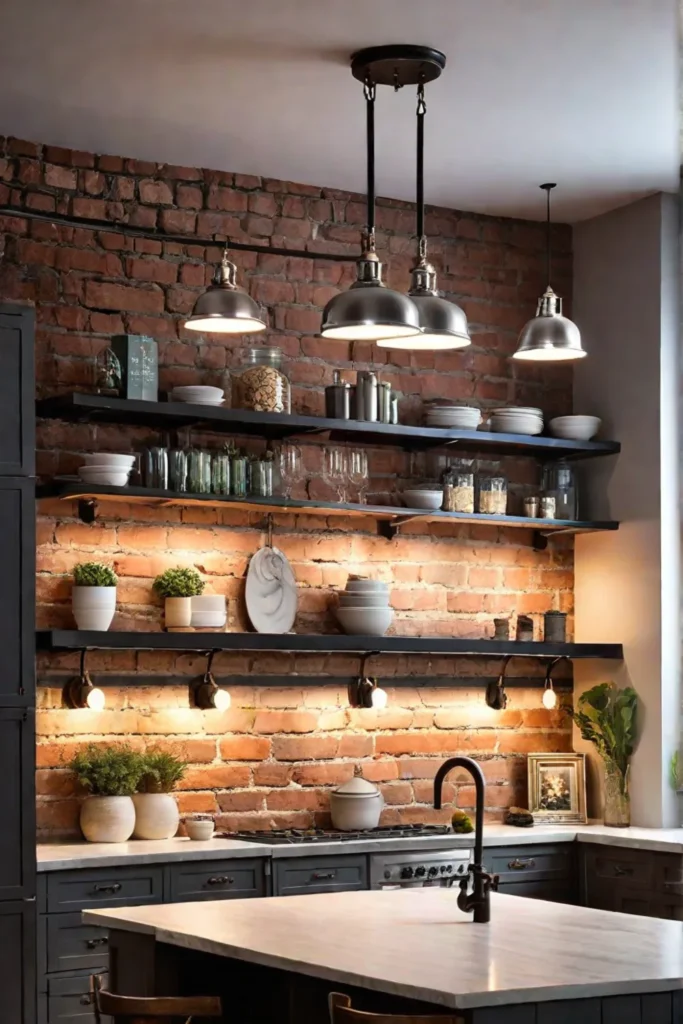
Now get out there and light up your kitchen like the star it is! And remember, if you need any more advice, I’m always here, ready to help you wrangle your lighting challenges. Happy trails, partners!
Frequently Asked Questions
What type of light bulb is best for kitchen table lighting?
Well, partner, that’s like asking what type of horse is best for riding – it depends on what you’re after! But if you’re twisting my arm, I’d say LED bulbs are hard to beat. They’re as efficient as a well-trained cutting horse, last longer than a tall tale, and come in more varieties than cactus in the desert.
How many lumens do I need for a kitchen table?
For a kitchen table, you’ll want somewhere between 300 to 500 lumens. That’s bright enough to see your vittles clearly, but not so bright you’ll feel like you’re under interrogation. It’s like having just the right amount of campfire light – enough to see your food, but still cozy.
What color temperature should I choose for kitchen table lighting?
I’d recommend aiming for 2700K to 3000K. That’ll give you a warm, inviting light that’s cozier than a bear hug from your grandma. It’ll make your food look as appetizing as a sizzling steak on the grill, and create an atmosphere that’ll make folks want to linger longer than a lazy Sunday afternoon.
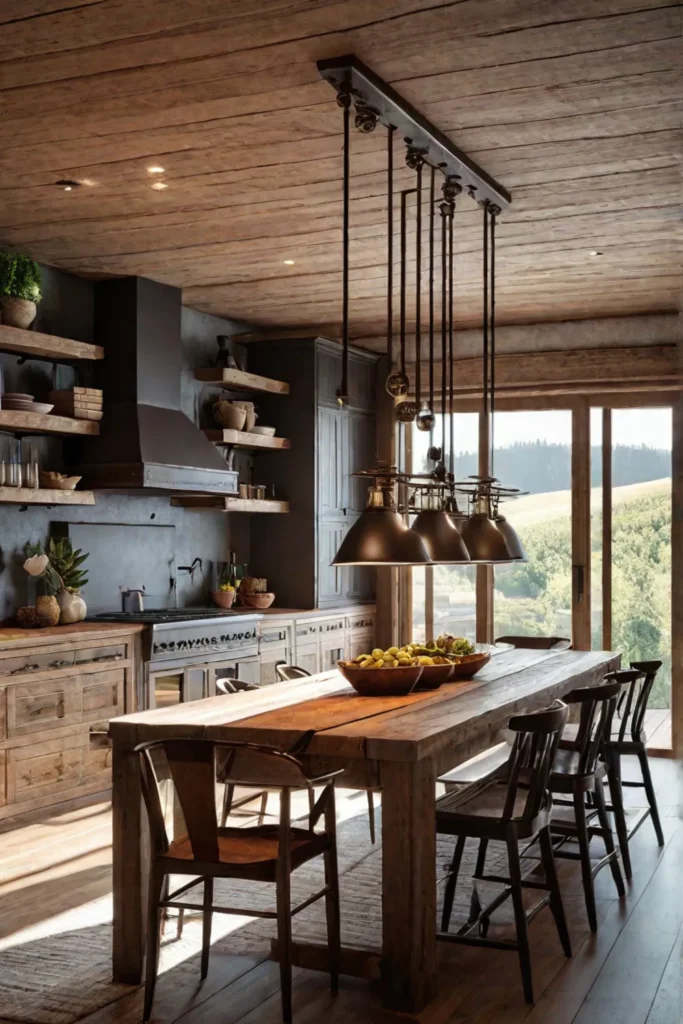
Are dimmable light bulbs worth it?
You bet your boots they are! Dimmable bulbs are like having a good pair of reins – they give you control. You can adjust the mood faster than a cow can swish its tail, perfect for everything from intimate dinners to lively family breakfasts.
Can I use smart bulbs in my kitchen?
Absolutely! Smart bulbs in your kitchen are handier than a pocket on a shirt. You can control them from your phone, set schedules, and even change colors. It’s like having a personal lighting wrangler at your beck and call.
How often should I replace my kitchen light bulbs?
Well, that depends on what type of bulb you’re using, partner. LEDs can last up to 25,000 hours – that’s longer than a Texas summer!

